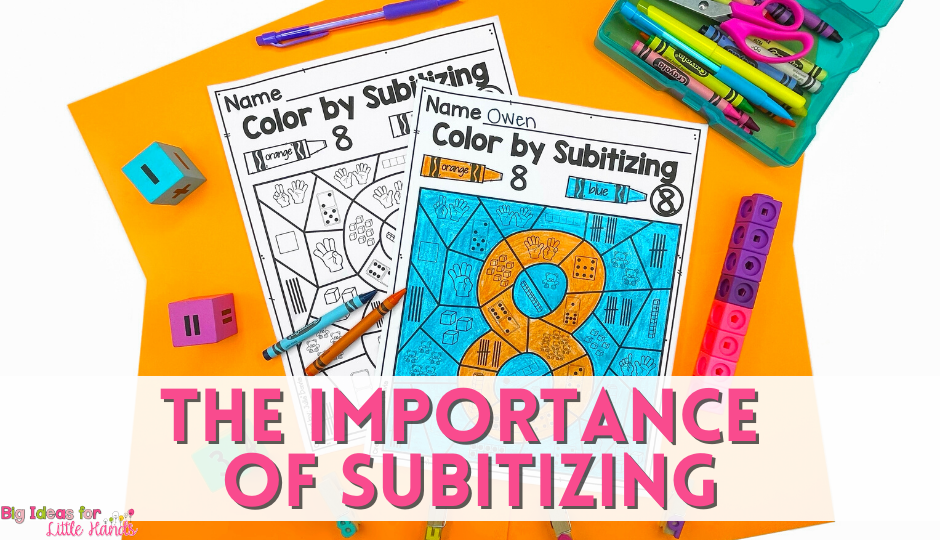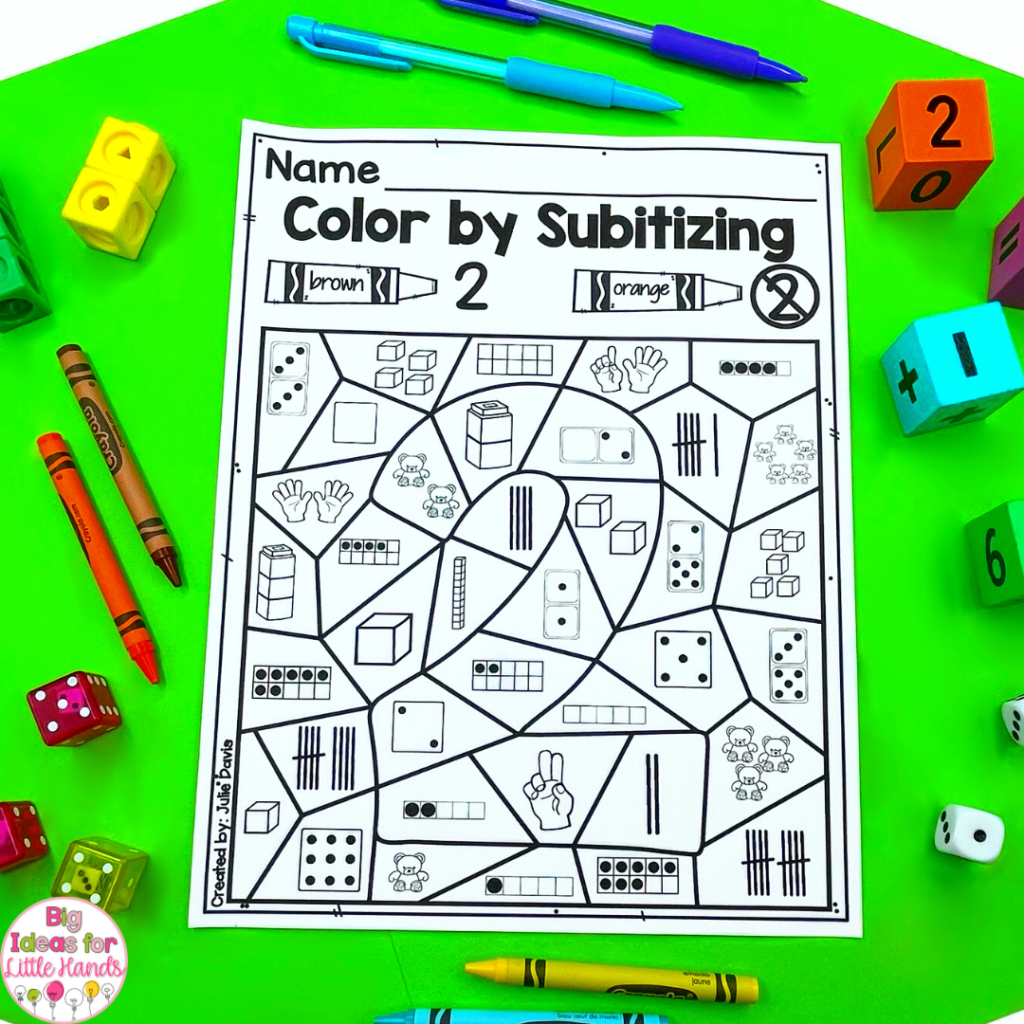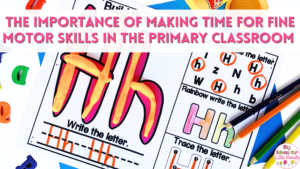How do you tackle subitizing in your classroom? While the word itself can make this skill seem complicated, it couldn’t be easier to teach this skill to young students. Let’s chat about the importance of subitizing and how to teach young children to subitize in fun ways!

What Is Subitizing?
First off, what exactly is subitizing? To subitize simply means, to identify the number of things in a small set by quickly looking at them, rather than counting them one by one.

Dice are a perfect example of subitizing in action. When you roll a pair of dice, you can quickly see the number represented on each side, without counting. Your brain recognizes the familiar pattern for each number of dots 1-6.
Another time this might come up for you is when you’re using ten frames. The familiar structure of the tens frame helps our brains determine how many spaces are filled without needing to count each one.
By simply glancing at a tens frame with 5 spaces filled in across the top, you immediately know this represents the number 5.
Why Is Subitizing Important?
In the early years of learning, our kiddos are picking up on so many important skills that will lay the foundation for future success. Subitizing definitely falls into that category! Learning to subitize is an integral part of developing basic number sense skills. When children learn to subitize, they better understand numbers and will be able to apply these skills later in life when diving into more complex math lessons.
Types of Subitizing
There are two main types of subitizing that are important for young learners to master.

- Perceptual: This type refers to recognizing how many are in a small set of up to 5.
- Conceptual: This type refers to recognizing smaller groups within a larger set by adding them together.
These dominoes are a perfect example of both types of subitizing. When you look at the picture your brain likely identifies the royal blue dots as 5, the pink dots as 3, the yellow dots as 6, and the light blue dot as 1.
However, when looking at the purple or orange dots your brain likely takes a different approach. On the orange dots, you probably did a quick glance and then 4+4+2 to determine that the orange dots were 10. No, you didn’t write out an equation and it may have only taken a split second, but you quickly subitized to determine the number represented. Same with the purple dots. A quick 3+3+1 and you know that the purple represents 7.
When it comes to perceptual subitizing, think about helping children to recognize how many fingers you’re holding up without counting. Conceptual subitizing examples could include working with tens frames, groups of 10, and simple equations.
Both of these are very important, but you want to start with perceptual first and get those smaller sets down. Once children have a firm grasp on recognizing smaller sets of numbers, you can move into working with larger number groups. Just remember that until students have an understanding and some practice with basic addition, they probably won’t make the jump to conceptual subitizing.
Teaching Subitizing Skills
The key when it comes to subitizing is to master numbers 1-5 before moving on to those larger numbers.
This is a skill often taught in preschool, pre-k, and kindergarten classrooms through daily math centers, circle time songs, and day-to-day lessons.
Young children can practice this skill through daily life as well. For example, you could work on this skill during snack time with small crackers, cookies, or grapes by arranging snacks in front of you using the familiar layout you see on a die cube.
Another great way is to sing songs like “5 Little Ducks”, being sure to hold up that number of fingers for each one.
Exposure and repetition are key to helping children master this skill and learn to recognize sets of numbers 1-5 quickly and easily.
More Ways To Subitize
Once your kiddos have been introduced to this concept, it’s important to practice this skill regularly through a variety of fun activities. This often comes up for my students during math centers when we work with counting bears, counting cubes, dominoes, and dice. These are all fantastic manipulatives to begin recognizing sets of numbers.
Once children have worked with these materials, I love to practice working on each number through 10 with Color By Code Subitizing Worksheets. Using a no-prep activity for practicing this skill is such a great way to give students continued exposure to number sets. Seeing the sets represented in a variety of ways over and over helps to speed up their ability to recognize each set.
Using Color By Code for Subitizing
The Color By Code Worksheets I use include numbers 0-10. Each page focuses on 1 specific number and has some other sets mixed in. The students will identify the number in each set and color the space according to the code. The sets are represented in the following ways:
- dice
- dominoes
- hands
- counting bears
- counting cubes
- tally sticks
I love these no-prep pages since the sets on each one feature familiar manipulatives we use in our classroom. I purposely chose these to help students get faster and more effective in recognizing each one.
We use these color-by-code pages during centers, independent work time, morning work, and even small groups. I love watching my kiddos work on these during small groups, especially if I have a kiddo that is struggling with this skill. Since the pages feature items we have in the classroom, it’s really easy to pull those manipulatives out and create a live example for my students as needed.
Try These Subitizing Activities in Your Class
If you’re looking for a no-prep way to help cement these important skills among your students, be sure to check out my Color by Code Subitizing Worksheets. I love using these in my classroom since it’s such an easy way to check in on student understanding and see how they are doing with this skill. These are great for centers, small groups, morning work, and early finishers!
You can find these and more subitizing activities in my store on Teachers Pay Teachers. Here are a few that my students LOVE year after year:
Save This Post
Don’t forget to pin this post on Pinterest so you can quickly come back when you need some fun and engaging subitizing activities for your classroom.












